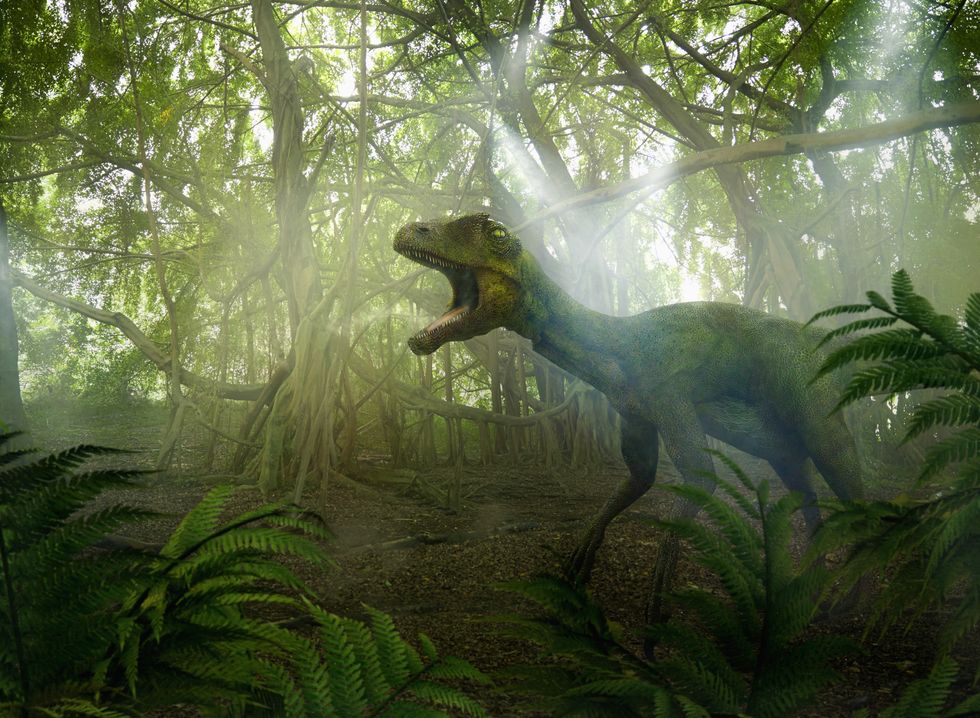Dog-sized killer dinosaur species discovered 200 million years after going extinct in scientific breakthrough

The small but mighty beast could grow to a height of 3.2 feet and a length of 6.5 feet
Don't Miss
Most Read
Latest
Scientists have discovered a new dog-sized dinosaur species that roamed the Earth 220 million years ago.
The Maleriraptor kuttyi is believed to be one of the earliest killer dinosaurs in history.
The now-extinct creature lived during the Triassic period and has been identified as part of the Herrerasauria family, known to be among the earliest carnivorous dinosaurs.
The small but mighty beast could grow to a height of 3.2 feet and a length of 6.5 feet, comparable to a large-breed dog such as a Great Dane.

Scientists have discovered a new dog-sized dinosaur species (not pictured) that roamed the Earth 220 million years ago
|GETTY
Confirming the significance of this ancient carnivore in dinosaur evolution, Dr Martín Ezcurra from Argentina's Natural Science museum said: "Herrerasaurs represent the oldest radiation of predatory dinosaurs."
The fossilised dinosaur bones were discovered more than forty years ago in Telangana, India.
However, scientists have only now identified exactly what species these bones belonged to.
This breakthrough adds a significant chapter to our understanding of these ancient predators, as researchers continue to piece together the evolutionary history of dinosaurs.
LATEST DEVELOPMENTS:

Scientists believe this extended survival might be because India had a similar climate to South America during the Triassic period
|Getty
Prior to this discovery, Herrerasauria fossils had been found in South and North America.
This bombshell finding proves that these ancient predators roamed far more of the Earth than previously thought.
The Indian specimens are believed to have outlived their American counterparts, suggesting these killer dinosaurs had a wider distribution and longer survival in certain regions than scientists initially understood.
Scientists believe this extended survival might be because India had a similar climate to South America during the Triassic period.

The small but mighty beast could grow to a height of 3.2 feet and a length of 6.5 feet, comparable to a large-breed dog such as a Great Dane (pictured)
|Getty
These comparable environmental conditions could have provided suitable habitats for the Herrerasauria family to thrive longer in India than elsewhere.
The discovery significantly expands our understanding of dinosaur migration and adaptation across the ancient supercontinent.
This comes after another significant dinosaur discovery - the Tameryraptor markgrafi from Egypt.
Originally found in 1914 by Ernst Stromer von Reichenbach, the 95-million-year-old skeleton was later destroyed when Munich was bombed during World War Two.
"The Egyptian dinosaur fossil depicted there differs significantly from more recent Carcharodontosaurus found in Morocco," said Maximilian Kellermann, who reanalysed Dr Stromer's surviving notes and photographs.










